Understanding the Science and Practice of ABA Therapy
Applied Behavior Analysis (ABA) is a scientifically validated approach used widely to improve social, communication, and behavioral skills in individuals with autism and other developmental disorders. This article explores the foundational principles, methods, applications, and misconceptions surrounding ABA therapy, providing a comprehensive overview based on trusted research and expert practice.
Foundations and Principles of ABA Therapy
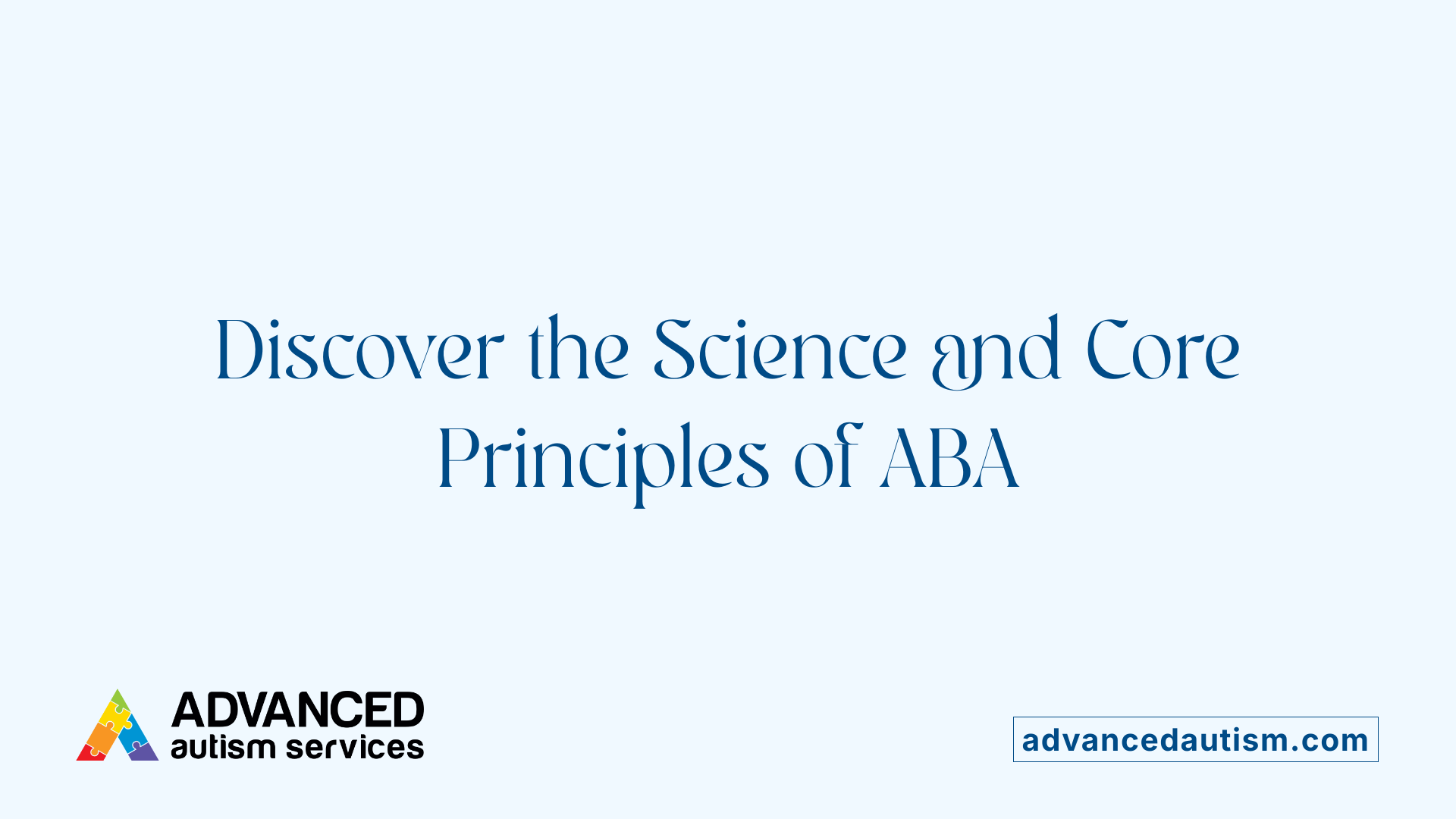
What is ABA therapy?
Applied Behavior Analysis (ABA) is a well-established therapy rooted in the science of learning and behavior. Its main goal is to help individuals develop helpful skills and reduce behaviors that interfere with their daily lives. This approach involves understanding how behaviors work, how they are affected by the environment, and how learning naturally occurs. ABA uses evidence-based techniques such as positive reinforcement, where desirable behaviors are rewarded, to encourage positive change.
What are the four main functions of behavior in ABA therapy?
In ABA, understanding why a behavior occurs is crucial. There are four primary functions:
| Function | Explanation | Examples |
|---|---|---|
| Attention | Behaviors aimed at gaining social interaction or feedback. | A child may scream to get a parent's attention. |
| Escape | Actions to avoid an unpleasant situation or task. | A student might avoid homework by acting out. |
| Tangible | Behaviors motivated by access to a specific item or activity. | A child throws a tantrum to get a toy. |
| Automatic (Sensory) | Behaviors driven by internal sensations or stimuli. | Self-stimulatory actions like rocking or hand-flapping. |
Knowing these functions helps therapists create customized plans. They can teach new, positive ways to get needs met while reducing harmful behaviors.
Why is ABA considered an evidence-based approach?
Supported by extensive research, ABA has demonstrated its effectiveness in improving a wide range of skills and reducing problematic behaviors. It is widely recognized by major health organizations as a best practice, especially for autism spectrum disorder (ASD). Such interventions are designed through detailed assessments and continuous data collection, ensuring that each individual’s program is tailored to their unique needs.
How does ABA promote meaningful change?
ABA employs techniques like positive reinforcement—rewards such as praise or tangible items—to increase desired behaviors. It also involves analyzing the antecedents (what happens before a behavior) and consequences (what happens after) to understand behavior functions.
Programs are personalized, and licensed professionals such as Board Certified Behavior Analysts (BCBAs) oversee the application of ABA. They develop goals based on thorough assessments, monitor progress with data collection, and adapt strategies as needed.
ABA can be delivered in various settings—homes, schools, or communities—and is effective across different age groups, from early childhood to adults. Its goal is to improve communication, social skills, academic abilities, and daily living skills, ultimately enhancing independence and quality of life.
| Feature | Details | Additional Notes |
|---|---|---|
| Target population | Children and adults with autism, intellectual disabilities, and emotional disorders. | Broad application beyond autism. |
| Methods | Positive reinforcement, antecedent modification, skill teaching, behavior reduction. | Includes structured tasks like Discrete Trial Training and naturalistic approaches like NDBIs. |
| Goals | Develop social, communication, daily living, and academic skills; reduce harmful behaviors. | Goals are individualized and data-driven. |
| Professionals | BCBAs, RBTs, other trained clinicians. | Supervised, ethical, evidence-based practice. |
This structured, scientifically supported approach continues to evolve, ensuring that individuals receive personalized interventions that foster meaningful skill development in a respectful and ethical manner.
How ABA Therapy Works and Techniques Used
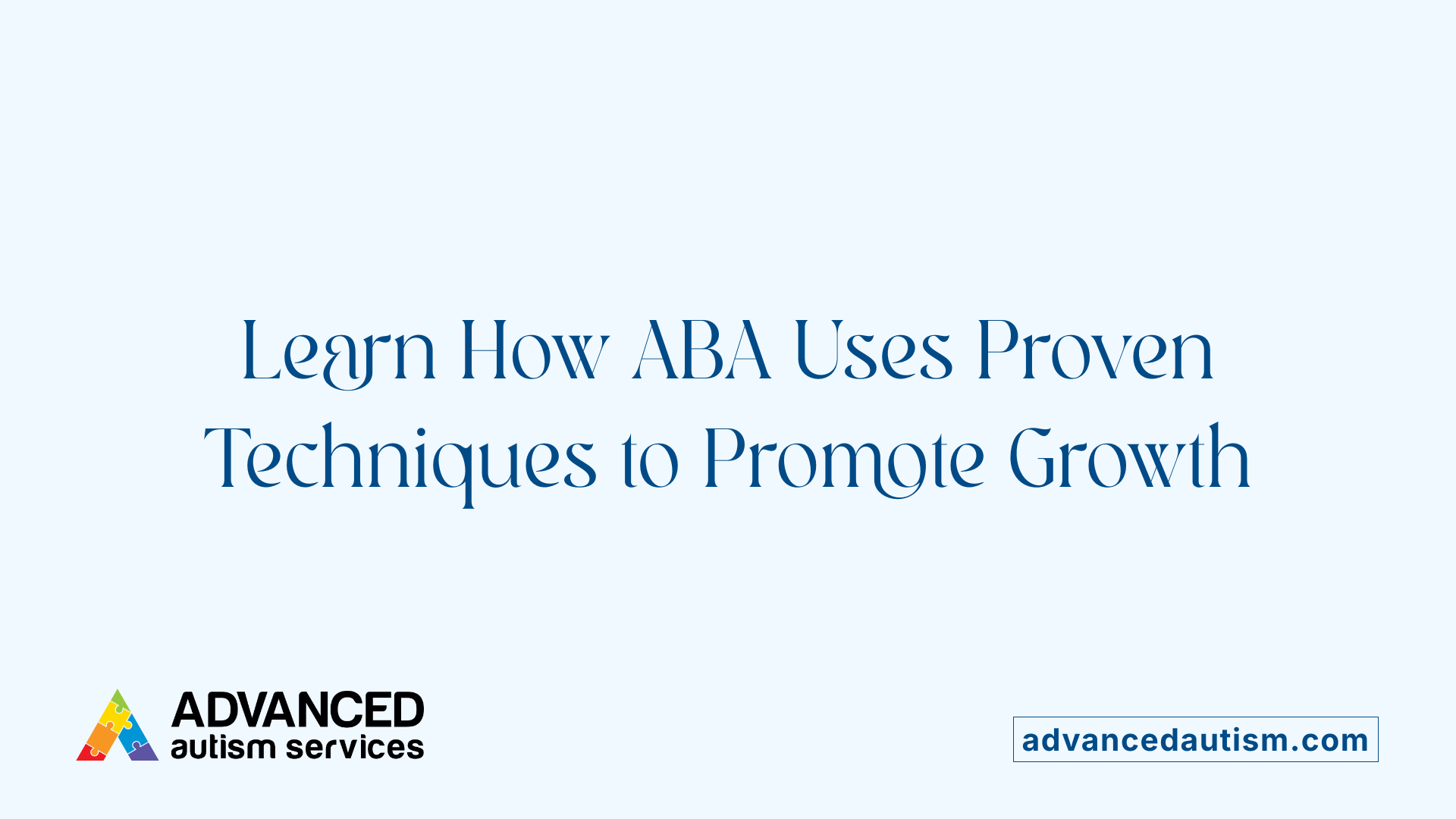
How does ABA therapy work and what techniques does it use?
ABA therapy operates on the scientific principles of learning and behavior, aiming to bring about positive changes for individuals, particularly those with autism spectrum disorder (ASD). It involves carefully observing behaviors, understanding the environmental factors influencing them, and applying structured interventions to promote beneficial behaviors and diminish problematic ones.
At the core of ABA are evidence-based techniques tailored to each individual's needs. A qualified behavior analyst designs personalized plans that include setting clear, measurable goals. These goals might involve enhancing communication skills, social interactions, daily living skills, or reducing harmful behaviors. The therapy incorporates ongoing data collection to monitor progress and adjust strategies as needed.
Family involvement is important, as caregivers help reinforce skills in natural settings, ensuring skills learned during therapy generalize beyond clinical environments. Supported by extensive research, ABA has shown significant improvement across various developmental and behavioral domains. Nevertheless, ongoing studies continue to explore its long-term impacts and overall effect on quality of life.
What are the primary techniques used in ABA?
Several core techniques drive the effectiveness of ABA. Positive reinforcement is fundamental — it rewards desired behaviors with praise, tokens, or tangible rewards, encouraging repetition. Analyzing antecedents (what happens before a behavior), the behavior itself, and consequences (what happens afterward) — known as the A-B-Cs — helps identify why behaviors occur and how to influence them.
Prompting strategies guide individuals through new behaviors, gradually fading supports to promote independence. Task analysis breaks down complex skills into small, manageable steps, making learning easier and more approachable. Data collection throughout sessions helps professionals tailor interventions, track improvements, and modify approaches based on what works best for each individual.
In summary, ABA combines these techniques within a structured, individualized framework designed to teach socially significant skills and reduce problematic behaviors effectively.
Benefits of ABA Therapy for Individuals with Autism
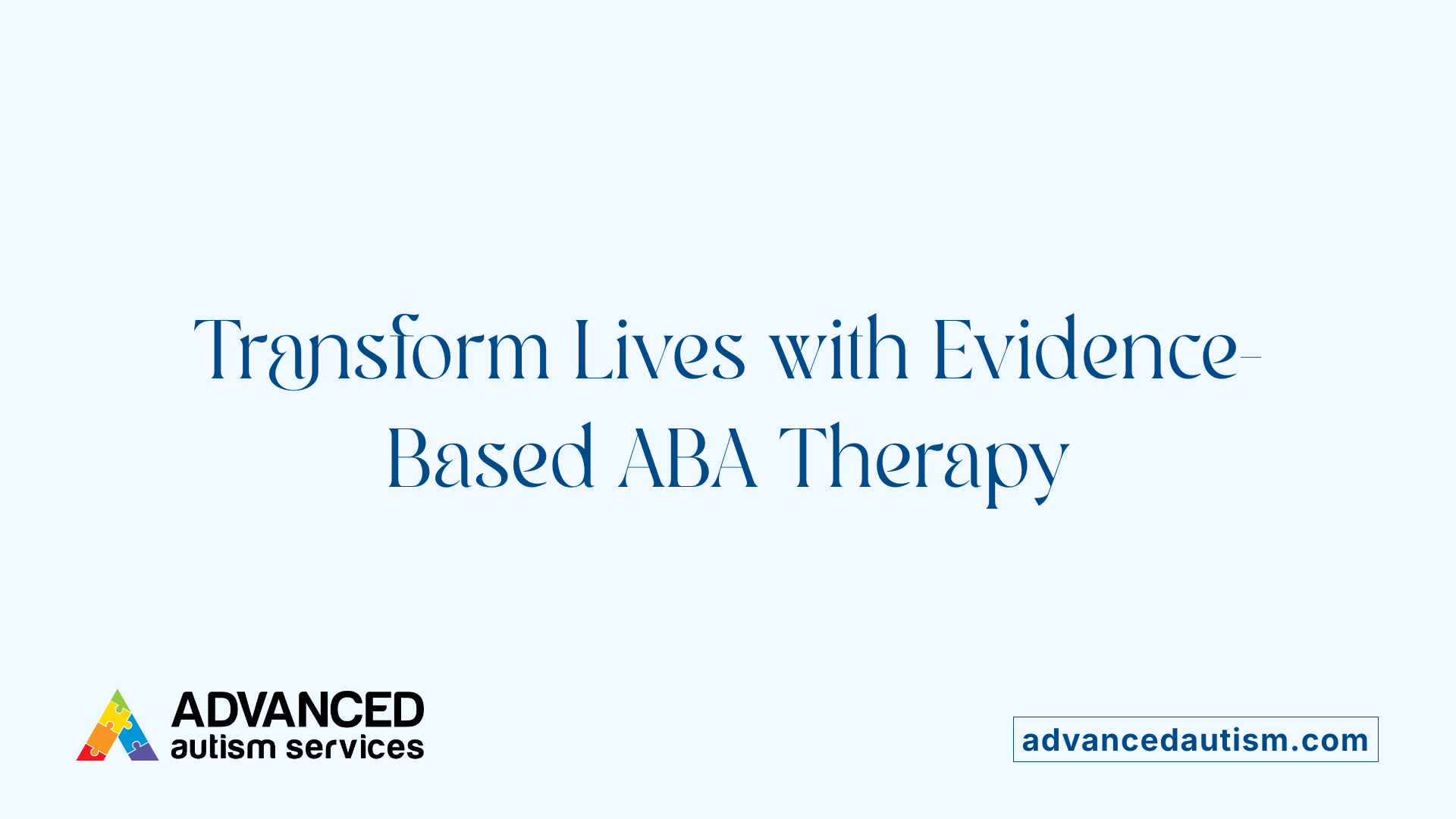
What benefits can ABA therapy provide for individuals with autism?
ABA therapy offers a wide array of advantages that can significantly improve the lives of people with autism. One of its primary aims is to teach crucial skills such as communication, social interaction, self-care, and daily living activities.
Through the use of scientific methods like positive reinforcement and careful analysis of antecedents and consequences, ABA helps increase helpful behaviors while reducing problematic or interfering behaviors. This personalized approach is tailored to each person's specific needs and abilities, enabling meaningful progress.
Research consistently supports the effectiveness of ABA, especially when implemented early and intensively. Studies show that children receiving ABA show notable gains in language development, cognitive skills, social engagement, and adaptive behaviors. These improvements contribute to greater independence and a higher quality of life.
The structured and data-driven nature of ABA also involves families and caregivers in the therapy process. They participate in goal setting, supervising sessions, and tracking progress, ensuring that interventions are relevant and adaptable. As a result, individuals are better able to participate in community and educational settings, fostering greater inclusion.
Is ABA therapy only effective for autism?
While ABA is most prominently recognized for its success with autistic individuals, its principles extend to other conditions as well. For example, it is used in addressing ADHD, OCD, PTSD, and behavioral challenges associated with Traumatic Brain Injury.
ABA techniques such as reinforcement strategies, behavior analysis, and environmental modifications are applicable to a broad spectrum of behavioral issues. They help reduce problematic behaviors and promote positive, socially significant skills in various populations, including neurotypical children.
Although ABA is not a cure, when integrated into comprehensive treatment plans, it can substantially improve functioning and quality of life across different diagnoses. Beyond autism, ABA remains a versatile, evidence-backed approach that supports behavior change and skill development in many developmental and behavioral contexts.
Addressing Misconceptions and Myths About ABA
What are some common misconceptions or controversies about ABA therapy?
Applied Behavior Analysis (ABA) often faces misunderstandings despite its strong foundation as an evidence-based practice. A prevalent misconception is that ABA therapy is harmful or overly rigid. In reality, ABA is highly flexible and tailored to meet the unique needs of each individual. Therapists develop personalized programs that focus on promoting useful skills and reducing harmful behaviors, while respecting each person's preferences and neurodiversity.
Another misconception concerns the use of reinforcement and punishment. Critics sometimes argue that ABA relies on bribery or punishment to change behaviors. However, modern ABA emphasizes positive reinforcement—using rewards like verbal praise, tokens, or other tangible incentives—to encourage desired behaviors. Punishment is rarely employed and only as a last resort under strict ethical guidelines, with a primary focus on teaching alternative, functional skills.
Respect for neurological diversity is also misunderstood. Some believe ABA aims to 'normalize' autistic children by suppressing natural behaviors such as stimming. Instead, the goal is to enhance functional abilities and independence while allowing individuals to maintain behaviors that do not cause harm or distress. The focus is on empowering individuals to participate meaningfully in daily life.
Furthermore, many think that ABA is only applicable to autism. While it is most recognized for its use with autistic individuals, ABA principles are versatile and used to modify a range of behaviors, including in areas like health, sports, and organizational skills.
When practiced ethically and with a person-centered approach, ABA supports diverse developmental goals. It is crucial to understand that ABA is not a one-size-fits-all method but a scientifically supported approach aimed at improving quality of life through individualized and respectful strategies.
Age Range for ABA Therapy and Early Intervention
What is the typical age range for ABA therapy?
The usual age range for starting ABA therapy is between 2 and 6 years old. Early childhood is considered the most effective time to begin because the brain is highly adaptable during this period.
Research shows that initiating ABA during these formative years can significantly enhance language development, social skills, and daily living abilities. This early intervention can also lessen the severity of autism symptoms, making a noticeable difference in a child's overall functioning.
While most children are diagnosed with autism around age 2, there are modified forms of ABA tailored for infants, starting as young as 6 months old. For example, the Early Start Denver Model is designed for very young children, focusing on promoting social communication skills in a naturalistic setting.
Typical ages of commencement
Most children diagnosed with autism begin ABA therapy shortly after diagnosis, which commonly happens around age 2. The goal during these early years is to harness the brain’s plasticity to develop foundational skills.
Starting early is crucial because it increases the likelihood of improvements in speech, social interactions, and adaptive behaviors. The earlier intervention begins, the more opportunities there are for positive developmental trajectories.
Modified approaches for infants
For infants and very young children, ABA techniques are adapted to suit their developmental stage and attention span. These approaches are often less structured and more play-based, focusing on naturalistic interactions.
Programs like the Early Start Denver Model incorporate child-led activities, emphasizing social engagement and communication in everyday routines. This approach helps address social and communication delays early, potentially reducing future challenges.
Broad applicability across ages
While early intervention yields the best outcomes, ABA is effective across age groups, including older children, teenagers, and adults. For older individuals, therapy is tailored to specific goals such as independent living skills or workplace performance.
In summary, the ideal time to start ABA is during early childhood, ideally before age 4, but it remains beneficial at later ages as well. Recognizing early signs and beginning intervention promptly can make a significant difference in developmental progress.
The Role of Qualified Professionals and Family Participation
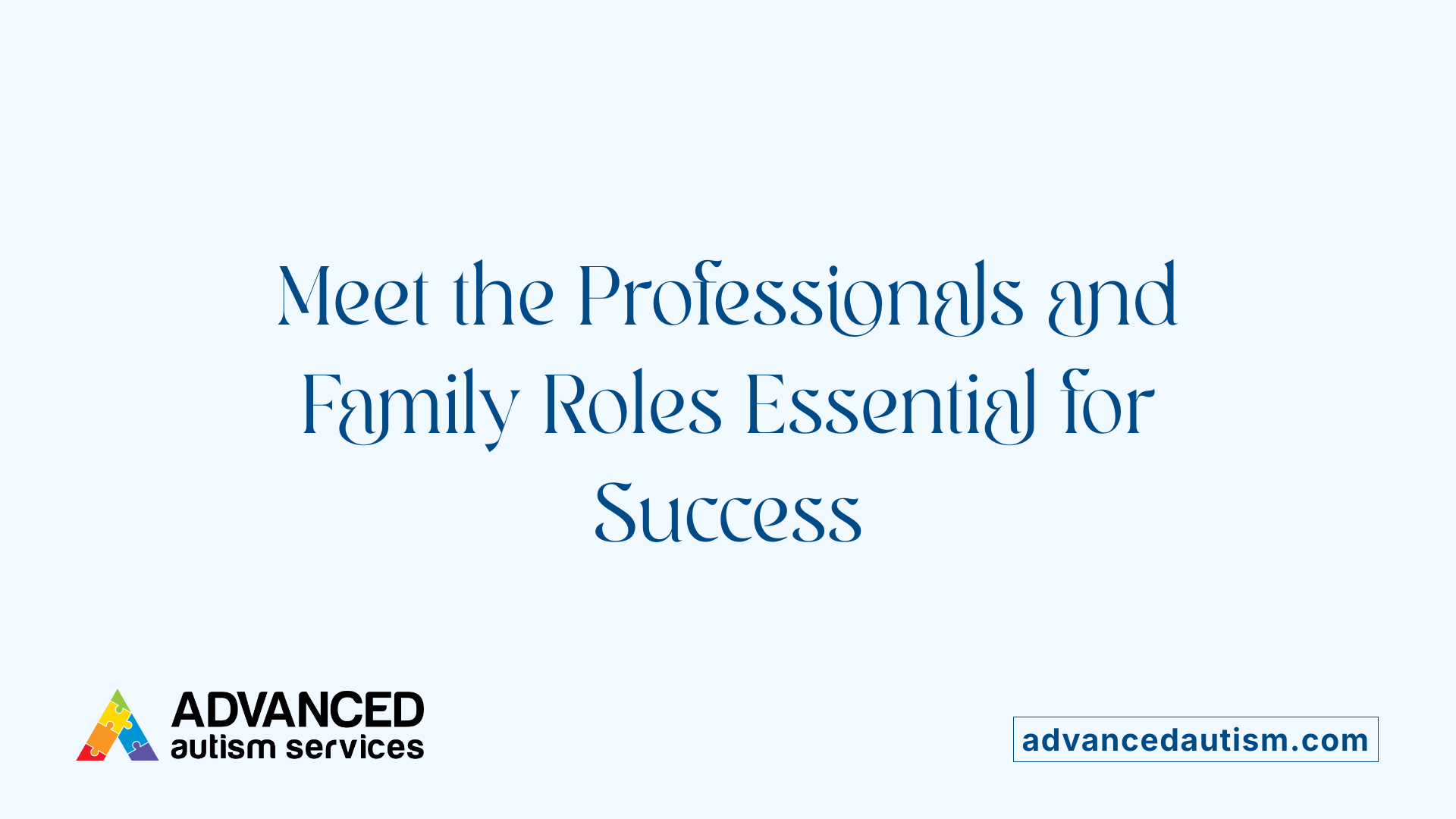
What qualifications are needed to provide ABA therapy?
Only trained and qualified professionals such as Board Certified Behavior Analysts (BCBAs), Board Certified Assistant Behavior Analysts (BCaBAs), and Registered Behavior Technicians (RBTs) are authorized to deliver formal ABA therapy. These specialists are responsible for developing individualized treatment plans based on thorough assessments and ongoing data collection. Their expertise ensures ethical, effective care by guiding intervention strategies, monitoring progress, and making data-driven adjustments.
BCBAs usually hold advanced degrees and certification, providing them with the necessary skills to analyze behaviors and design tailored programs. BCaBAs assist BCBAs under supervision, while RBTs implement direct interventions following outlined plans. Their combined efforts are fundamental to delivering high-quality ABA services.
How important is family participation in ABA therapy?
Family involvement is essential for maximizing the benefits of ABA treatment. Families contribute to the therapy process through active participation in goal setting, session supervision, and behavior data collection. This engagement helps ensure that skills learned in therapy generalize across various settings, including home, school, and community.
Training caregivers in reinforcement techniques, prompting, and task division enables them to support ongoing learning outside formal sessions. When families collaborate closely with clinicians, it enhances the consistency of interventions and fosters greater independence for individuals receiving therapy. Maintaining open communication allows for continuous adaptation of goals and strategies, leading to more effective and sustainable outcomes.
Accessing ABA Services and Program Expectations
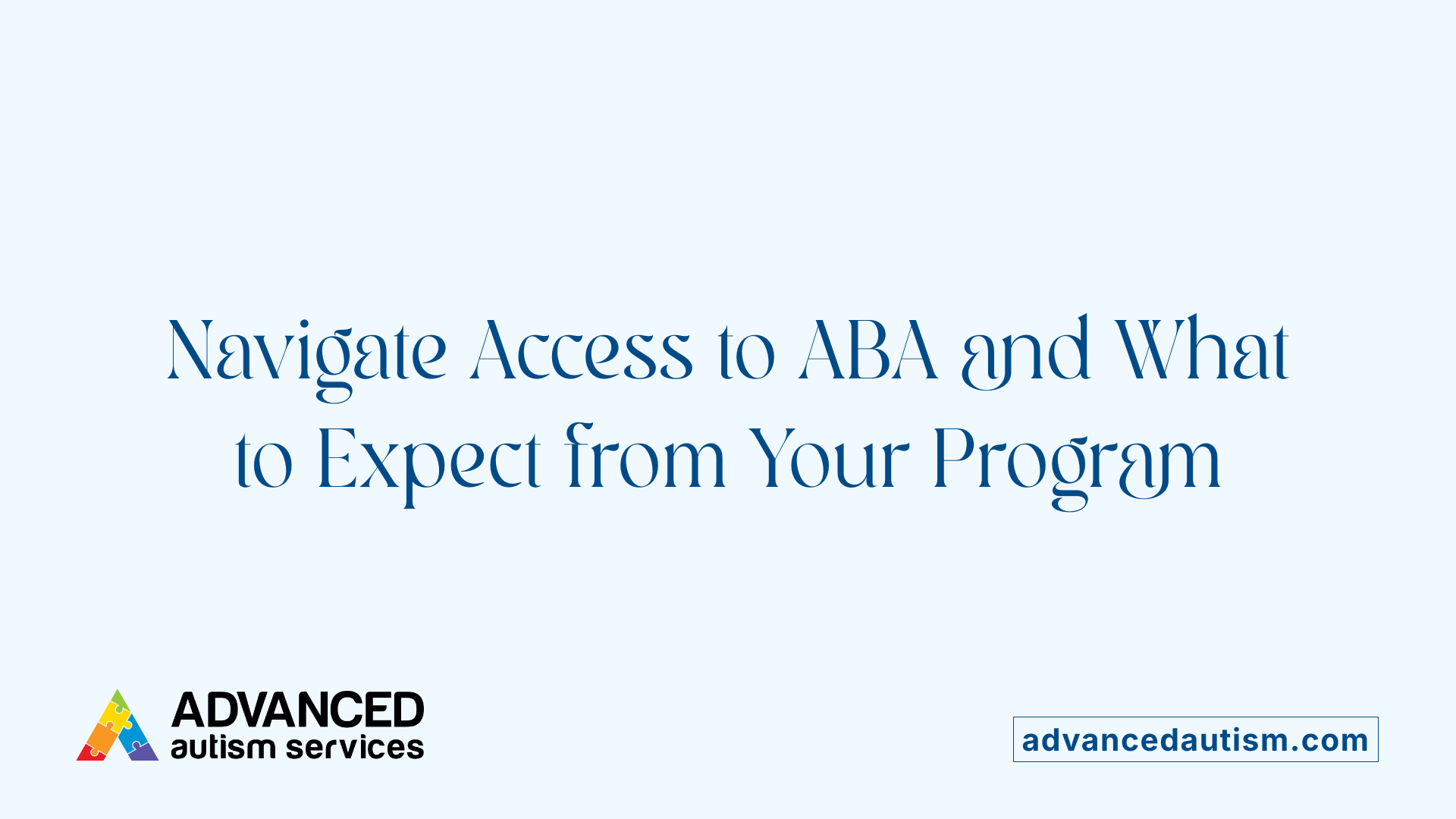 Understanding how to access Applied Behavior Analysis (ABA) services and what to expect from these programs is essential for families and caregivers seeking effective support.
Understanding how to access Applied Behavior Analysis (ABA) services and what to expect from these programs is essential for families and caregivers seeking effective support.
Eligibility criteria and referral process include being under the age of 21, enrolled in Medicaid, having a recent diagnosis of autism or related developmental conditions, and facing social, behavioral, or communication challenges. Typically, families start the process through a referral from a healthcare provider or contact their health plan directly. Qualified clinicians and ABA professionals then evaluate the individual's needs to determine eligibility and develop a treatment plan.
How to access services through health plans or providers varies but generally involves contacting Medicaid or similar health coverage programs, which provide resources and directories of approved providers. Families can also reach out directly to licensed behavior analysts (BAs), such as Board Certified Behavior Analysts (BCBAs) or Registered Behavior Technicians (RBTs), who deliver the therapy. These providers coordinate with families to set goals and monitor progress.
Program components and goals of ABA include comprehensive assessment, individualized goal setting, and tailored interventions. These programs focus on increasing skills such as communication, social interaction, and daily living, while decreasing harmful or interfering behaviors. Therapy sessions may occur at home, school, or community settings, designed to be natural and engaging, often using reinforcement techniques like verbal praise or tangible rewards.
Monitoring progress and adjusting treatment involves continuous data collection and regular review meetings. A qualified behavior analyst oversees the program, analyzing behavior patterns to refine strategies. This adaptive approach ensures that interventions meet evolving needs, maximize positive outcomes, and support long-term independence.
Access to ABA services can significantly improve the quality of life for individuals with autism and related disorders. Families are encouraged to work closely with trained professionals and leverage available resources to build a successful, personalized ABA program.
Empowering Development Through Evidence-Based Strategies
ABA therapy stands as a scientifically supported and flexible intervention that can significantly improve the lives of individuals with autism and other developmental challenges. By understanding its core principles, methods, and applications, families, clinicians, and policymakers can better leverage this approach to foster independence, social participation, and overall well-being. As research continues to evolve, ABA’s role in enhancing developmental outcomes remains vital, emphasizing a person-centered, ethical, and data-driven model of support.
References
- Applied Behavior Analysis (ABA) | Autism Speaks
- Myths & Facts About Applied Behavior Analysis
- [PDF] Applied Behavior Analysis (ABA) Therapy Fact Sheet - RI.gov
- Debunking 7 Common Myths About ABA Therapy - GSEP Blog
- Questions and answers about ABA | Autism Speaks
- ABA Myths vs Facts - The Autism Clinic at Hope
- The Facts Behind Behavioral Analysis - Autism Science Foundation
- Is ABA Therapy Only for Autism? - Applied Behavior Analysis Degrees
- The Controversy Around ABA - Child Mind Institute
- Debunking 7 Common Myths About ABA Therapy - GSEP Blog



